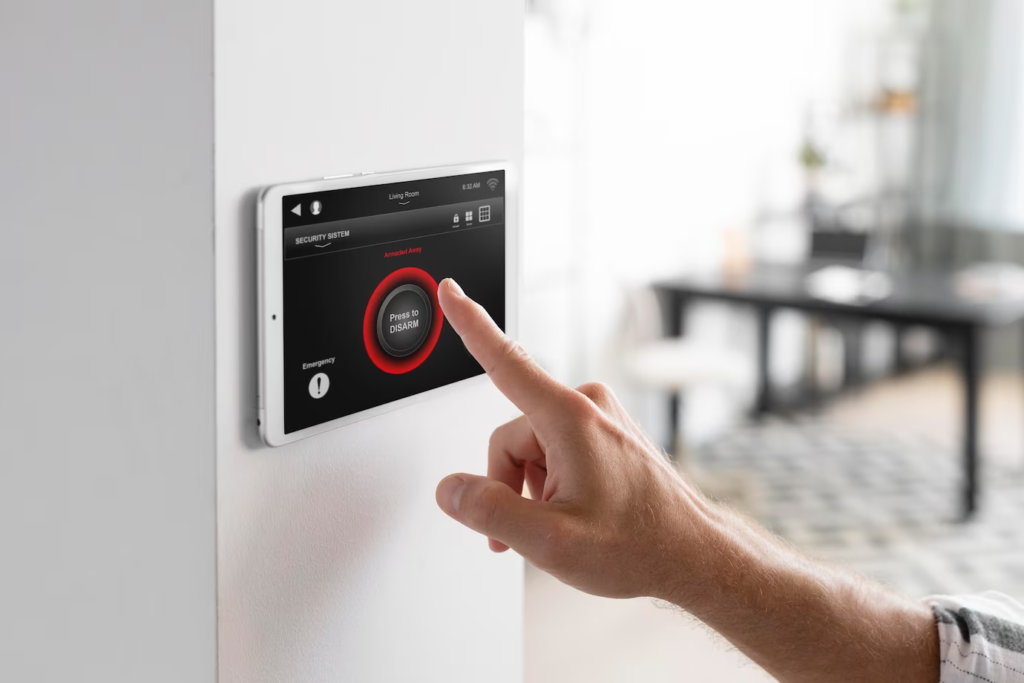Latest Trends In Security Alarm Technology

In the rapidly evolving landscape of home security, technological advancements have brought forth a new era of sophisticated and interconnected alarm systems. From wireless innovations to artificial intelligence integration, the latest trends in security alarm technology are reshaping the way we protect our homes and loved ones.
Wireless Technology and Security Alarm Systems
Gone are the days of extensive wiring and complicated installations. The advent of wireless technology has revolutionized security alarm systems, making them more accessible and user-friendly. Wireless security alarm systems offer a seamless installation process, eliminating the need for complex setups and reducing installation costs.
Flexibility with Wireless Sensors and Cameras
Wireless sensors and cameras provide unparalleled flexibility in securing different areas of your home. These devices can be strategically placed without the constraints of wiring, ensuring optimal coverage and adaptability to changing security needs.
Central Control Panel and Smart Home Integration
Modern security alarm systems come equipped with a central control panel that serves as the brain of the operation. Integration with smart home devices allows users to control and monitor their security systems seamlessly through smartphones and other connected devices.
Advanced Video Surveillance with High-Definition Cameras
High-definition cameras enhance the clarity and precision of video surveillance, offering detailed images and recordings. This improvement contributes to better identification and tracking of potential security threats.
Artificial Intelligence-Powered Security Alarm Systems
The integration of artificial intelligence (AI) and machine learning algorithms has elevated security alarm systems to a new level. These systems can analyze data, identify patterns, and recognize anomalies, significantly reducing false alarms and improving overall security.
Cloud Storage for Video Footage and Data
Cloud storage ensures that video footage and data are securely stored and easily accessible from anywhere. This feature not only provides convenience but also safeguards critical information in the event of tampering or theft.
Biometric Authentication and Access Control
Biometric authentication, such as fingerprint and facial recognition, adds an extra layer of security to access control. This technology ensures that only authorized individuals can disarm the security system, enhancing overall protection.
Voice Control Integration with Amazon Alexa and Google Assistant
The convenience of voice control through platforms like Amazon Alexa and Google Assistant allows users to manage their security systems effortlessly. Voice commands enable quick adjustments to settings and monitoring without the need for physical interaction.
Environmental Monitoring for Added Safety
Security alarm systems now extend beyond intrusion detection to include environmental monitoring. Smoke, carbon monoxide, and water leak detectors automatically trigger alerts, providing early warnings and potentially saving lives.
Two-Way Audio and Communication
Two-way audio features enable communication between homeowners and monitoring services. This functionality not only allows users to verify visitors remotely but also serves as a deterrent to potential intruders.
Mobile App Integration with Real-Time Notifications
Mobile app integration provides real-time notifications, keeping homeowners informed of specific events and potential security breaches. Users can also remote control system settings through the convenience of their smartphones.
Final Thoughts
The latest trends in security alarm technology reflect a commitment to improving user experience, enhancing security measures, and incorporating cutting-edge innovations. As these advancements continue to evolve, the future of home security appears more interconnected, intelligent, and adaptable than ever before.

